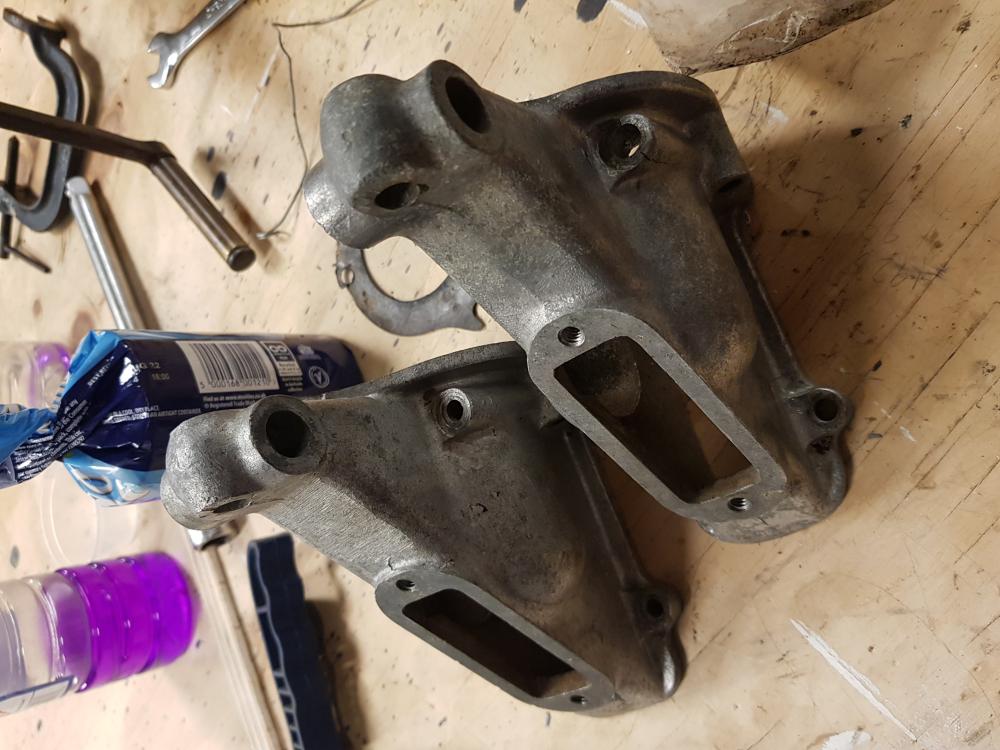12-03-2022, 01:33 AM
Hi,
Another quick question....
We've spotted that the casting that the dynamo mounts on has a crack - it's in the long bolt mount in the one on the right:

Closeup:

as you'll see from the first pic, luckily I have a perfect spare....
unluckily, there's a reason for the crack - clearly the thread in the crankcase stripped at some point and someone tapped this out to the next size up and drilled the casting, weakening it, and it then cracked.
I reckon I've got a few options....
1/ put the old one back on, with crack as it is (?repair with epoxy or something better?), and don't tighten too much
2/ fit some sort of insert (?HeliCoil) in to the existing tapped hole in the crankcase to take it back down from 1/4W to 3/16W
3/ source a long stud with 1/4W end and nice long 3/16W body (no, I don't have a lathe so can't make one)
It had been working OK for ages with the crack before, and it seems to me that the bolts at the other end take most of the force, given that the dynamo hangs out so far..... but if a HeliCoil would wind in to the existing hole then maybe that's the way to go. An issue there is that I've got the block attached to the crankcase and I really don't want to take it off again...
Thoughts / opinions?
Another quick question....
We've spotted that the casting that the dynamo mounts on has a crack - it's in the long bolt mount in the one on the right:
Closeup:
as you'll see from the first pic, luckily I have a perfect spare....
unluckily, there's a reason for the crack - clearly the thread in the crankcase stripped at some point and someone tapped this out to the next size up and drilled the casting, weakening it, and it then cracked.
I reckon I've got a few options....
1/ put the old one back on, with crack as it is (?repair with epoxy or something better?), and don't tighten too much
2/ fit some sort of insert (?HeliCoil) in to the existing tapped hole in the crankcase to take it back down from 1/4W to 3/16W
3/ source a long stud with 1/4W end and nice long 3/16W body (no, I don't have a lathe so can't make one)
It had been working OK for ages with the crack before, and it seems to me that the bolts at the other end take most of the force, given that the dynamo hangs out so far..... but if a HeliCoil would wind in to the existing hole then maybe that's the way to go. An issue there is that I've got the block attached to the crankcase and I really don't want to take it off again...
Thoughts / opinions?




